Nominated Researchers
Koichi Kato
| Okazaki Institute for Integrative Bioscience, National Institutes of Natural Sciences Professor, Ph. D. |
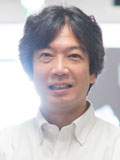 |
|
| Role | Project Leader, A03 Group Leader, Nominated Researcher | |
|---|---|---|
| Title | Exploration of micro-macro relationships in dynamic ordering of biomolecular systems and their underlying design principles | |
| Co-Investigator (kenkyu-buntansha): | Tadashi Satoh Graduate School of Pharmaceutical Sciences, Nagoya City University, Associate Professor, Ph. D. |
|
| Takumi Yamaguchi School of Materials Science, Japan Advanced Institute of Science and Technology, Associate Professor, Ph. D |
||
| Kensuke Kurihara Okazaki Institute for Integrative Bioscience, National Institutes of Natural Sciences Research Associate Professor, Ph. D. |
||
| Co-Investigator (renkei-kenkyusha): | Maho Yagi-Utsumi Institute for Molecular Science, National Institutes of Natural Sciences, Assistant Professor, Ph. D. |
|
| Saeko Yanaka Institute for Molecular Science, National Institutes of Natural Sciences, Assistant Professor, Ph. D. | ||
| Purpose | In this research project, we will develop physicochemical measurement methods for exploring micro–macro relationships in the dynamic ordering of biomolecular systems and use them to observe the assembly and disassembly processes of biomolecules with high precision. Based on these analyses, we will be able to elucidate the mechanisms underlying dynamic biomolecular organization, thereby highlighting well-designed instability and robustness of self-organized biomolecular systems. This will facilitate a better understanding of the principles governing their space-time evolution coupled with the development of their integrated functions. Furthermore, we will attempt to provide insights into the creation of artificial self-organizing systems that embody the design rules of biomolecular assemblies, which develop themselves in a flexible manner in response to external perturbations and in communicating with one another. The achievements of this project will lead to a paradigm shift in molecular science. | |
Hirofumi Sato
| Department of Molecular Engineering, Kyoto University Professor, Ph. D. |
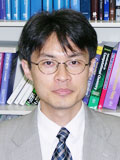 |
|
| Role | A01 Group Leader, Nominated Researcher, Secretary General | |
|---|---|---|
| Title | Molecular theories for self-organization and order formation. | |
| Co-Investigator (kenkyu-buntansha): | Takeshi Yamamoto Graduate School of Science, Kyoto University Assistant Professor, Ph. D. |
|
| Co-Investigator (renkei-kenkyusha): | Takatoshi Fujita Institute for Molecular Science, Research Associate Professor, Ph. D. |
|
| Purpose | How is a molecule assembled dynamically from its building blocks? This is a simple but fundamental question encountered in many fields of chemistry and biology ranging from the synthesis of small molecules to the self-organization of macromolecules. However, it is still a challenge to characterize such a dynamical process at the molecular level because of the difficulty of tracking the system evolution of multiple length/time scales occurring on a complicated, multi-dimensional free energy surface. In this project, we try to develop new approaches to describe the spatiotemporal dynamics of self-organizing systems by utilizing integral equation theory for molecular liquids, hybrid QM/MM methods, molecular dynamics calculation, and so on. Furthermore, in collaboration with experimentalists, these approaches will be applied to a variety of chemical systems with the aim of obtaining new design principles for more flexible, biomimetic self-organization systems. |
|
Shuichi Hiraoka
| Graduate School of Arts and Sciences The University of Tokyo Professor, Ph.D. |
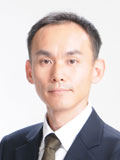 |
|
| Role | A02 Group Leader, Nominated Researcher | |
|---|---|---|
| Title | Control of self-organization in artificial systems based on a precise design of molecular surfaces | |
| Purpose | Although it is known that conversion between structures having similar energy states and their dynamic behaviors are the key of multi-function and its precise regulation in living system, mechanistic details have yet to be resolved. Van der Waals (vdW) interaction is weak but a significantly important molecular interaction relating to the above-mentioned functions. In this research project we will develop a method for evaluation of molecular meshing between molecular surfaces, and then by applying this method to artificial self-assembled molecules a quantitative analysis of vdW interaction will be realized. Furthermore, we will discriminate vdW interaction and hydrophobic effect for the self-organization in an aqueous environment and reveal each contribution to the dynamic property in biological system. Finally we will develop functional self-assembled materials based on a rational design of complementary molecular surfaces between which strong vdW interaction works. | |
Masahide Terazima
| Graduate School of Science, Kyoto University Professor, Ph. D. |
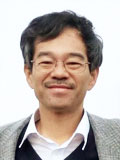 |
|
| Role | A01 Nominated Researcher | |
|---|---|---|
| Title | Studies on molecular mechanism of dynamic ordering and disassembling of biomolecular systems and development of time-resolved detection methods | |
| Purpose | In this research project, we will develop some new detection methods for probing assembly and disassembly processes of biomolecules in time-domain. These techniques will be useful and essential for understanding biological functions, because bio-function consists of well-designed dynamical networks of many intermolecular interactions. In particular, information transfers of various sensor systems will be studied from a view point of molecular assembly - disassembly processes. For example, a photosensor protein is activated by a pulsed laser light, and subsequent dynamical changes in intermolecular interaction will be detected in time-domain by monitoring the diffusion coefficient and thermodynamical changes and some other properties including the optical spectroscopy. | |
Hironari Kamikubo
| Graduate School of Materials Science Nara Institute of Science and Technology Professor, Ph. D. |
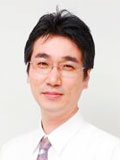 |
|
| Role | A01 Nominated Researcher | |
|---|---|---|
| Title | Exploring regulatory association and dissociation processes of biological molecules constituting a functional module | |
| Co-Investigator (kenkyu-buntansha): | Mikio Kataoka Ph. D Nara Institute of Science and Technology, Executive Director, Vice President |
|
| Purpose | Various protein molecules are concertedly involved in the execution of biological functions. Since these multicomponent biological molecules weakly interact with each other, they undergo dynamic dissociation and association upon inducing biological and physicochemical perturbations (dynamic ordering). It is assumed that well-organized dynamic ordering helps realize regulatory functions and ensures biological robustness. Therefore, to elucidate the biological propensities represented by robustness, it is not sufficient to investigate each molecule in isolation or with a single interaction partner that is a part of the multicomponent system; instead, concerted association and dissociation of multicomponent biomolecules should be studied. In this research project, by developing a new method based on solution quantum-beam (e.g., x-rays, neutrons) scattering techniques, we aim to study the dynamic ordering of a set of multicomponent biological molecules involved in expressing biological functions. In particular, we are targeting the multicomponent protein molecules related to signal transduction, membrane traffic, and neuroaxis extension. | |
Takahiro Hohsaka
| School of Materials Science, Japan Advanced Institute of Science and Technology Professor, Ph. D. |
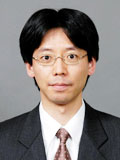 |
|
| Role | A02 Nominated Researcher | |
|---|---|---|
| Title | Development of chemically expanded biomolecular systems with dynamic ordering function | |
| Purpose | Dynamic ordering functions of proteins have been improved by altering amino acid sequences within naturally occurring 20 types of amino acids through biological evolution process. We have developed a method for site-specific incorporation of nonnatural amino acids into proteins using expanded genetic code. In this study, we will develop artificial proteins showing dynamic ordering functions using nonnatural amino acids. We will incorporate nonnatural amino acids carrying photo-responsible, photo-crosslinking, and fluorescent groups into protein complexes, and investigate the regulation and analysis of dynamic ordering functions of the protein complexes. In addition, we will examine the design and synthesis of artificial proteins showing dynamic ordering functions by introducing artificial molecules with dynamic ordering functions. | |
Sota Sato
| The University of Tokyo Associate Professor, Ph. D. |
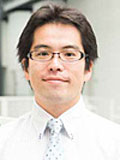 |
|
| Role | A02 Nominated Researcher | |
|---|---|---|
| Title | Development of Dynamical Ordering of Artificial Molecules by Mimicking Biomolecular Systems | |
| Co-Investigator (renkei-kenkyusha): | Yuuya Nagata Department of Synthetic Chemistry and Biological Chemistry, Kyoto University, Assistant Professor, Ph. D |
|
| Purpose | In the present research, self-assembled supramolecules synthesized from multi-components are the central molecules we work on, and the introduction of dynamical ordering into the self-assembly process is one of the goals of the study. We have found that the product structures dramatically switch in the course of formation, which can be called as “phase-transition of ordering”, and the use of this unique phenomenon with multivalent molecular recognitions realized by the flexible functional groups placed on the periphery of the supramolecular frameworks will open new molecular designs and their own functions based on the dynamic behavior. For example, the synthesis of “artificial vesicles for protein transport” with whole structural switches at a nanometer scale or the synthesis of “cyborg supramolecules” bearing biological molecular motifs with the inherent biofunctions can be designed through the mechanism of environmental response and time development. These dynamic behaviors of artificial supramolecules mimicking biomolecular systems that evolve depending on different time scales will be further applied to the area of biomolecular science. The present research project aiming dynamical ordering of complexes with cooperative many weak coordination bonds (coordination bonds or van der Waals interactions) via stepwise self-assembly is a new synthetic project, and the cooperative works with A01 and A03 groups will reveal the mechanistic insights of the dynamics. | |
Yuko Okamoto
| Department of Physics Nagoya University Professor, Ph.D. |
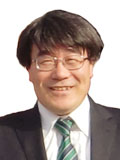 |
|
| Role | A03 Nominated Researcher | |
|---|---|---|
| Title | Interactions among biological molecular assembly and among artificial molecular assembly and large-scale structural transformations | |
| Purpose | In this research project, we will perform accurate molecular simulations of molecular assembly in order to elucidate the mechanisms of dynamical ordered structure formations and large-scale structural transformations. In systems with many degrees of freedom such as biomolecular systems, there exist a huge number of energy local-minimum states, and they are separated by high energy barriers. Conventional molecular simulations tend to get trapped in states in the vicinity of the initial states and result in errors. The generalized-ensemble algorithms overcome these difficulties of the conventional simulation methods. They perform random walks in conformational states and avoid getting trapped in states of energy local minima. This enables one to calculate thermodynamic quantities accurately as functions of temperature. The purpose of the present project is to develop new generalized-ensemble algorithms which are suitable for various systems of different research groups. | |
Naoyuki Inagaki
| Graduate School of Biological Sciences, Nara Institute of Science and Technology Professor, M.D., Ph. D. |
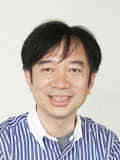 |
|
| Role | A03 Nominated Researcher | |
|---|---|---|
| Title | Dynamic ordering of cellular functions through self-assembly of component molecules | |
| Purpose | In this research project, we will analyze how dynamic self-assembly of cellular biomolecules execute cellular functions, by focusing on signal-force transduction in axon outgrowth and cellular migration. To do so, we will identify essential biomolecular components of a “clutch” system which is involved in signal-force transduction in axon outgrowth and cellular migration, though biochemical, biophysical and cell biological analyses. Furthermore, the identified molecular components will be reconstituted in a liposome system to validate their ability for executing cellular morphogenesis and migration. We will also analyze how the identified molecular components self-assemble and disassemble in structural and theoretical points of view. The present research will facilitate a deeper understanding how cellular biomolecules dynamically self-organize functional modules in order to execute higher cellular functions. | |
